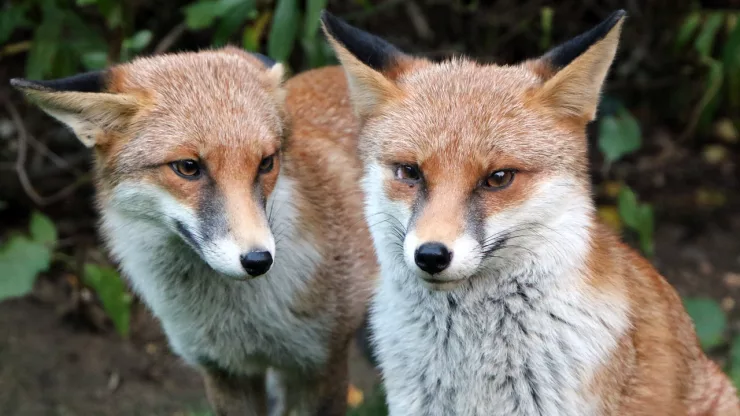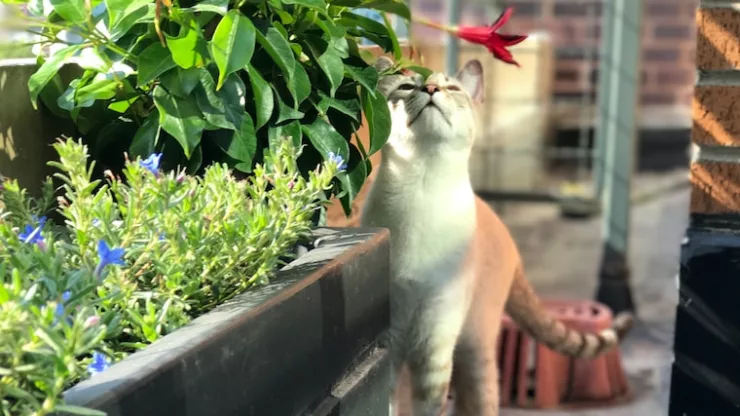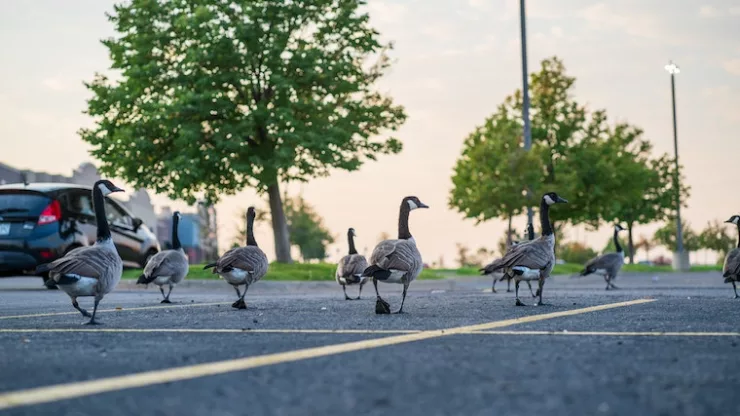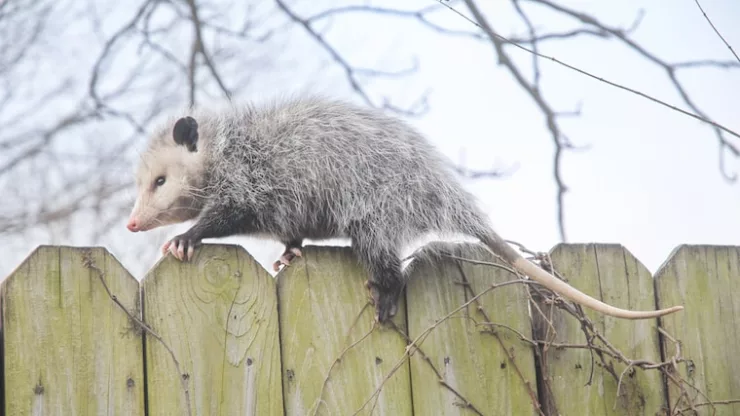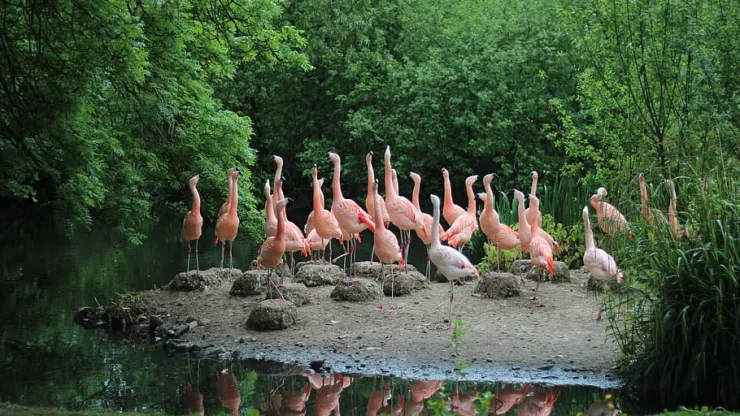Urbanization is an ever-growing phenomenon across the world, resulting in significant changes to natural habitats and ecosystems.
With the rise of urbanization, wildlife has had to adapt to human-dominated landscapes.
Urban wildlife refers to species that reside in or near cities and utilize human-dominated ecosystems.
These species come into contact with humans either in cities or on the woodland-urban interface.
Examples of common urban wildlife species in the United States include raccoons, red-tailed hawks, coyotes, English sparrows, European starlings, house mice, rock doves, and Norwegian rats.
Jump to Section
Characteristics of Successful Urban Wildlife
Urban wildlife has unique characteristics that enable it to thrive in human-dominated areas. These characteristics include:
- Utilization of human food sources, such as birdfeeders, garbage, or pet food
- Omnivorous and generalist with regard to food and habitat
- Strong competitors that can exclude native species
- Higher tolerance of human disturbance
- Ability to change their behavior and adapt to major environmental disturbances
Studying Urban Wildlife: Why it Matters
Understanding urban wildlife is crucial to preserving biodiversity, maintaining ecosystem function, reducing property damage, fostering safe neighborhoods, and encouraging positive associations with wildlife.
Urbanization impacts animal ecology in developed areas, but many species persist.
It is of great interest to scientists to understand which species thrive in urban areas or are able to tolerate human presence and what characteristics are associated with persistence.
In order to appreciate the ecosystem-level impacts of urbanization, a deeper understanding of how behavior and demography of urban wildlife are influenced by alterations to native habitat is required.
Landscape Connectivity and Function
Development heavily fragments natural landscapes, and species that are able to effectively utilize urban zones may benefit from higher functional connectivity.
Refuges and parks in urban areas can act as stepping-stones for animals navigating human-dominated landscapes.
Protecting and enhancing animal movement paths is important to the preservation of genetic viability of urban wildlife populations. Corridors for wildlife can also rescue small populations from extinction by allowing new individuals to immigrate from larger, healthier populations.
| Key Aspect | Description | Examples |
|---|---|---|
| Landscape Fragmentation | Development causes the division and isolation of natural habitats, impacting wildlife movement and population dynamics. | Urbanization, highways, industrial areas |
| Functional Connectivity | The degree to which the landscape allows wildlife to move and access resources across fragmented habitats. Higher functional connectivity benefits species that can utilize urban zones effectively. | Green corridors, wildlife overpasses, and underpasses |
| Refuges and Parks | Urban green spaces that provide habitat and resources for wildlife, acting as stepping-stones for animals navigating human-dominated landscapes. | Urban parks, community gardens, nature reserves |
| Animal Movement Paths | Pathways that allow wildlife to move safely between fragmented habitats, contributing to the preservation of genetic viability in urban wildlife populations. | Wildlife corridors, green bridges |
| Conservation and Management | Efforts to protect and enhance landscape connectivity, ensuring the survival and well-being of urban wildlife populations. These actions help to prevent the extinction of small populations by enabling new individuals to immigrate from larger, healthier populations. | Habitat restoration, establishment of wildlife corridors, maintaining green spaces and refuges in urban areas |
Human-Wildlife Conflict
As cities continue to sprawl into undeveloped regions, wild animals are increasingly coming into contact with people.
Urban, suburban, and exurban growth can increase edge habitat, creating more opportunity for humans and wildlife to come into contact.
Human welfare and safety depend on a thorough understanding of urban wildlife and their interactions with the anthropogenic landscape.
Pets and livestock are often most at risk from interactions with urban wildlife and may require extra precautions to ensure their protection from native predators.
Urban wildlife research can seek out solutions to human-wildlife conflicts to minimize property damage and safety risks while still preserving intact wildlife populations.
Types of Urban Wildlife
Urban wildlife species can be considered human obligates, associates, exploiters, adapters, or avoiders.
These designations relate to the degree to which urban wildlife benefits from or is harmed by anthropogenic habitat change.
Domestic cats, dogs, and livestock play a major role in urban wildlife community composition. Obligates compete with, disturb, and predate upon native species.
Species interactions between obligates and natives greatly influence community function and diversity both in and on the fringes of urban development.
Raccoons, Virginia opossums, European starlings, house finches, rock doves, house mice, California gulls, American crows, Eurasian collared doves, house sparrows, and grey squirrels are human associates and exploiters.
Bobcats, coyotes, white-tailed deer, black bears, American robins, red foxes, striped skunks, Northern cardinals, lesser goldfinches, and red-tailed hawks are human adapters.
Mountain lions, grey wolves, grey foxes, and Pileated woodpeckers are human avoiders.
The table below summarizes these categories and provides examples of species within each group:
| Category | Definition | Examples of Species |
|---|---|---|
| Human Obligates | Species that depend on human-made habitats and resources for survival. | Domestic cats, dogs, livestock |
| Human Associates | Species that benefit from human activity, often thriving in urban environments. | European starlings, house finches, rock doves, house mice |
| Human Exploiters | Species that take advantage of resources provided by humans, but do not rely on them exclusively. | Raccoons, Virginia opossums, California gulls, American crows, Eurasian collared doves, house sparrows, grey squirrels |
| Human Adapters | Species that can adjust to urban environments but do not rely exclusively on human resources. | Bobcats, coyotes, white-tailed deer, black bears, American robins, red foxes, striped skunks, Northern cardinals, lesser goldfinches, red-tailed hawks |
| Human Avoiders | Species that tend to avoid urban environments and human presence. | Mountain lions, grey wolves, grey foxes, Pileated woodpeckers |
This table provides an overview of different types of urban wildlife based on their relationship with humans and urban environments.
Understanding these categories can help inform urban wildlife management strategies and conservation efforts.
Urban Wildlife Conservation and Management
Effective urban wildlife conservation and management requires a multidisciplinary approach. This includes collaboration between ecologists, urban planners, landscape architects, and local communities.
Strategies for conserving and managing urban wildlife include:
- Habitat creation and enhancement: Planting native trees and plants in urban areas to provide food, shelter, and nesting sites for wildlife. This can be achieved by creating green spaces, such as parks, gardens, and green roofs.
- Wildlife corridors and connectivity: Establishing and maintaining wildlife corridors to connect fragmented habitats, allowing wildlife to move freely and maintain genetic diversity. This can include the use of overpasses, underpasses, and green bridges to facilitate safe movement.
- Education and outreach: Increasing public awareness of urban wildlife and their importance in the ecosystem. This can be achieved through educational programs, community events, and the use of social media platforms.
- Responsible waste management: Proper waste disposal and recycling practices to reduce the availability of food sources for urban wildlife, minimizing conflicts and the spread of diseases.
- Human-wildlife conflict resolution: Implementing non-lethal methods to deter wildlife from causing property damage or posing a risk to human safety. These can include installing wildlife-proof trash cans, using scare devices, and fencing off sensitive areas.
- Monitoring and research: Ongoing monitoring and research of urban wildlife populations and their interactions with humans, in order to better inform management decisions and assess the success of conservation efforts.
Conclusion
As urbanization continues to increase worldwide, the importance of understanding and managing urban wildlife cannot be overstated.
This requires a collaborative approach among various stakeholders, such as researchers, planners, and communities, to ensure that urban ecosystems remain diverse, healthy, and functional.
By appreciating the unique challenges and opportunities that urban wildlife presents, we can work towards a future where humans and wildlife coexist harmoniously in our rapidly changing world.
FAQ
What is urban wildlife?
Urban wildlife refers to the various species of animals that have adapted to live in urban environments alongside humans.
These can include mammals, birds, reptiles, amphibians, and invertebrates that are either native or non-native to the area.
Why is it important to understand urban wildlife?
Understanding urban wildlife is crucial because these animals play a significant role in maintaining the ecological balance of urban ecosystems.
Additionally, they can impact human health, safety, and quality of life.
Learning about urban wildlife helps us coexist with these animals and develop effective conservation strategies.
Are all urban wildlife species harmful to humans?
No, not all urban wildlife species are harmful to humans.
Many species are harmless or even beneficial, such as pollinators like bees and butterflies. However, some species can pose threats to human health, safety, or property, such as rats, raccoons, or pigeons.
How do urban environments impact wildlife populations?
Urban environments can both positively and negatively impact wildlife populations.
While some species thrive in urban areas due to the abundance of food and shelter, others may struggle to survive due to habitat loss, pollution, and other human-induced factors.
Urbanization can also lead to the fragmentation of wildlife habitats, making it difficult for some species to find mates or disperse.
What are some common urban wildlife species?
Some common urban wildlife species include pigeons, squirrels, raccoons, rats, bats, foxes, and various species of birds.
The specific species found in an urban area will depend on factors such as geographic location, climate, and available resources.
How can humans help support urban wildlife?
Humans can support urban wildlife by creating habitat through planting native trees and plants, providing food and water sources, and minimizing the use of harmful chemicals.
Additionally, humans can practice responsible waste management, avoid feeding wildlife directly, and implement wildlife-friendly building designs.
What are some challenges faced by urban wildlife?
Urban wildlife faces several challenges, such as habitat loss, food scarcity, pollution, and increased human-wildlife conflicts.
These animals may also be more susceptible to diseases and parasites due to their proximity to humans and other animals.
How do urban wildlife species adapt to city life?
Urban wildlife species adapt to city life by developing unique behaviors, dietary preferences, and reproductive strategies.
For example, some animals may become nocturnal to avoid human activity, while others may adjust their diets to consume human-provided food sources.
These adaptations allow them to survive and sometimes even thrive in urban environments.
Can urban wildlife help improve the quality of life for city residents?
Yes, urban wildlife can improve the quality of life for city residents by providing various ecosystem services such as pollination, pest control, and natural beauty. Encounters with urban wildlife can also offer educational opportunities and a sense of connection to nature.
Are there any regulations or guidelines for managing urban wildlife?
Yes, many cities and countries have regulations and guidelines in place for managing urban wildlife.
These guidelines may include policies on habitat conservation, species management, and human-wildlife conflict resolution.
It’s essential for residents to familiarize themselves with local laws and guidelines and follow best practices for coexisting with urban wildlife.
I’m a nature enthusiast and creator of Metro Wilds and have spent years exploring the great outdoors.
With a passion for environmental conservation and sustainability, I have dedicated my career to writing about the beauty and wonders of nature, as well as the threats facing our planet.
Contact me at [email protected] for assistance.

